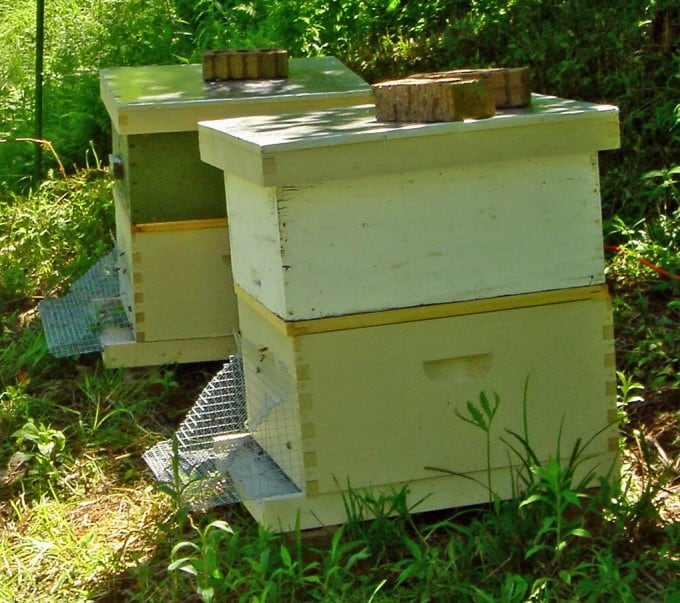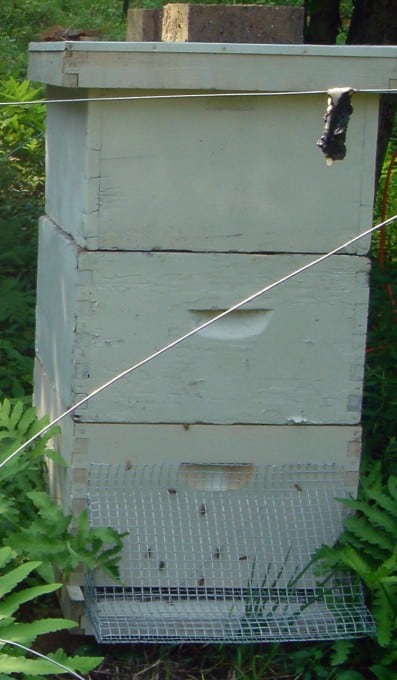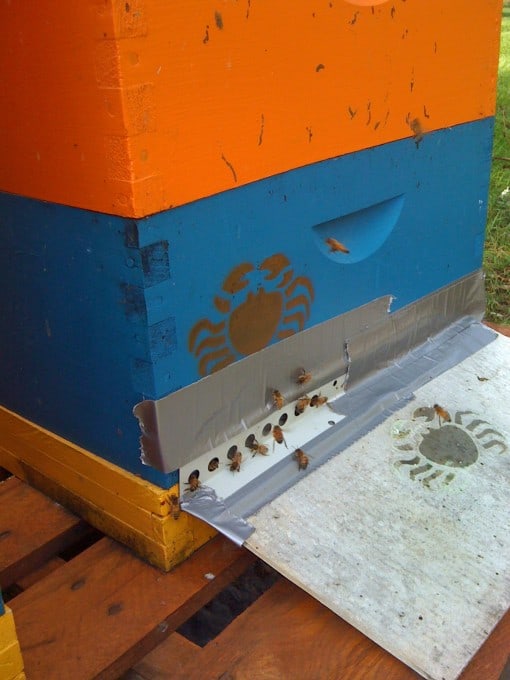
What is the purpose of an entrance reducer? Entrance reducers can be used for different things at different times of the year. Entrance reducers are most commonly used in the fall when forage becomes limited and bee traffic slows down. It is also important to seal up any other holes in the colony around this time of the year to prevent robbing or access for pests. Beekeepers will decrease the size of hive entrances to limit the space that the bees have to protect. They also change the temperature and ventilation unless using screen bottom boards. Reducers can keep unwanted pest like chipmunks and mice out of the colonies while the bees are clustered for winter. I have included images of some different entrance reducers I have seen in the field. I prefer the metal entrance reducer because mice are less likely to chew through them. If you are using the standard wooden cleat reducer with two notches, you should put notch facing upward toward the hive body. This in theory prevents the notch from being covered by accumulating dead bees from the cluster. When checking stores in the winter it is good practice to clean dead bees out of the entrance. Using an old bee brush or a plasting hanger work well for cleaning out the hive without disassemble the hive bodies.
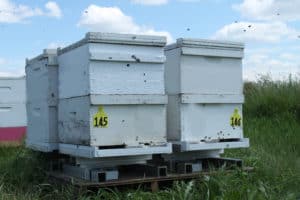
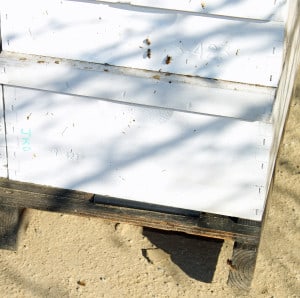
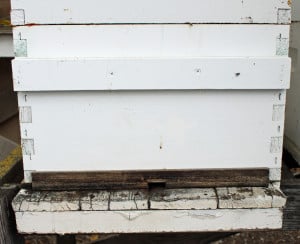
I stole this idea for a skunk guard from Dr. Robert Berthold and the skunk guard is pictured below. This entrance reducer uses galvanized wire mesh shaped at an angle to discourage skunks. This makes the skunk have to scratch above the wire to get the bees to come out of the hive. In doing this the skunk’s belly is exposed, one of the vulnerable spots the bees can sting the skunk. The skunk will place its feet on the chicken wire slant and get stung in the feet. You must make sure this is attached in the entrance pretty well because the skunk will try to pull it out. Also keeping hives elevated prevents skunks from eating and irritating your bees. You can use ¼ inch. galvanized wire mesh to make entrance reducers which also work well for mice and chipmunks.
